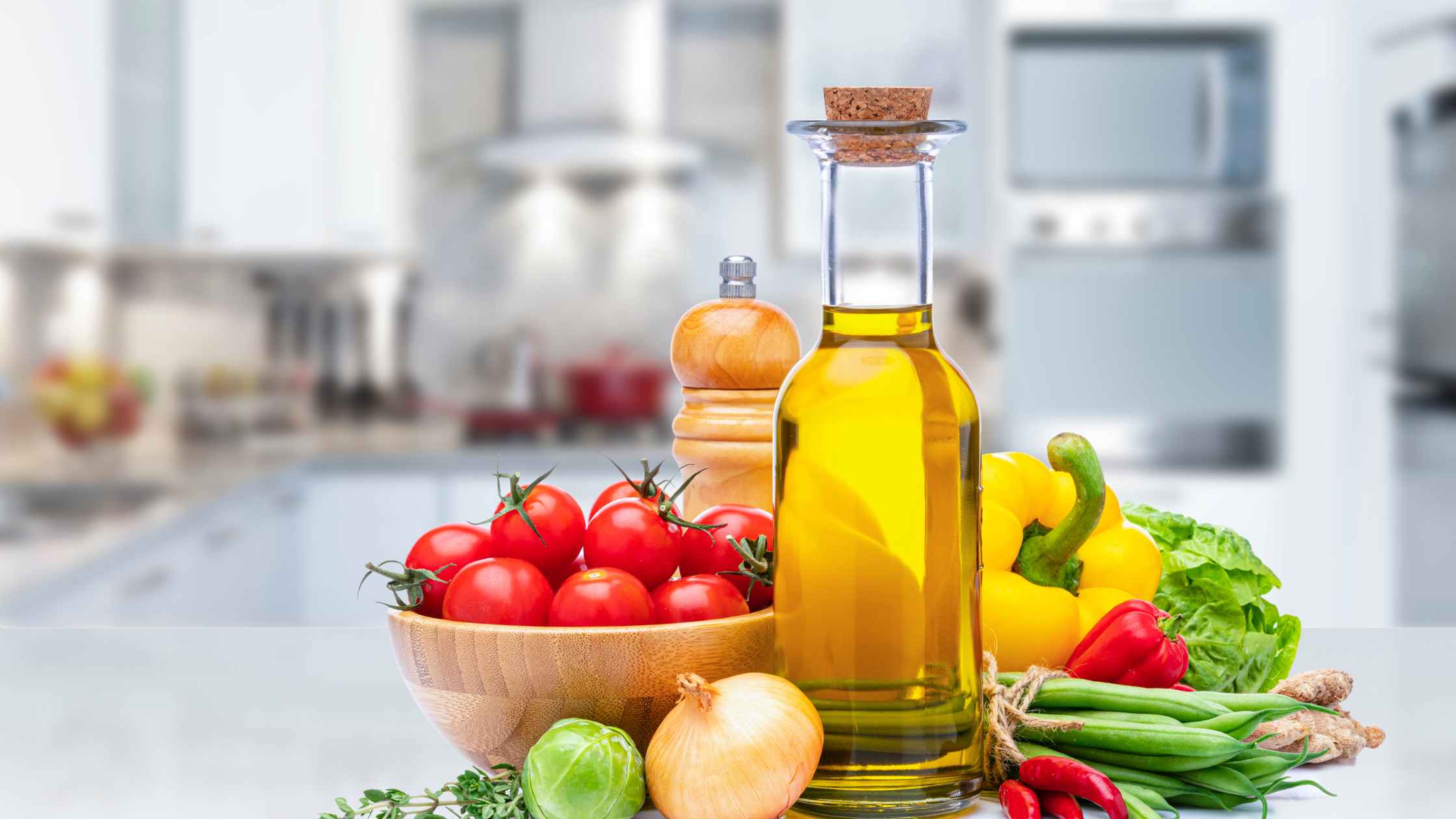Eating nutritious meals doesn’t have to mean overhauling your diet or spending hours prepping food from scratch. If you’re like most of us—juggling work, kids, activities, and just trying to stay sane—adding more nutrients to your meals needs to be realistic. And ideally, it should work with the recipes you’re already making.
Here are eight low-effort, high-impact ways to give your meals a nutritional boost. These small tweaks add up without adding stress.
1. Add Greens to Just About Everything
You don’t need a perfect plan or a fancy green smoothie to get more greens into your day. If you’ve got spinach, kale, arugula, or any type of mixed greens in the fridge, toss a handful regularly into:
-
Skillet dinners
-
Casseroles
-
Omelets or frittatas
-
Soups (right at the end so they stay bright)
I add greens to almost everything, sometimes multiple times a day, because it’s so easy. Greens wilt down quickly and blend right in so your family probably won’t really notice or object. Greens are so so good for you, and they deserve a place in everyone’s diet. They’re full of vitamins, minerals, and fiber and have many disease fighting properties. And if you use pre-washed containers, it becomes even easier to just grab a handful while you are cooking.
2. Roast a Tray of Veggies at the Start of the Week
One of the best ways to make eating nutritious meals easier, and to make sure you get a variety of veggies, is to have prepped vegetables ready to go.
Most Sundays or Mondays, I throw whatever I have on a cookie sheet—usually chopped broccoli, peppers, carrots, quartered red onions, or cauliflower—drizzle with olive oil, sprinkle with garlic powder, salt, and pepper, and roast at 400°F until golden. About 10 to 15 minutes, depending on what you’re roasting.
They taste amazing and are easy to reuse during the week:
-
Tossed into lunch bowls
-
Reheated as dinner sides
-
Mixed into pasta or rice dishes
✅Quick Tip: Experiment with your favorite veggies, or try ones you usually avoid to see if roasting changes your mind. For instance, if you’ve never really liked steamed broccoli, try roasting it instead. The difference in flavor and texture might be just what you need to make it work for your taste buds.
3. Make Your Salad Work Overtime
Salads are one of my favorite ways to get extra nutrition on the table. If salads are already part of your lunch or dinner routine, here are a few quick ways to upgrade the nutrition without adding much work:
-
Sprinkle with ground flaxseed or chia seeds (fiber and omega-3s)
-
Add chopped nuts like almonds, walnuts, or pistachios*
-
Top with berries or pomegranate seeds
-
Mix in leftover cooked veggies
- Finely chopped cauliflower or broccoli (gives it some crunch and gets these nutritional powerhouses onto the plate without ever having to say “Eat your broccoli”!!
I use all of these on our salads regularly. Occasionally, someone will ask, “What’s the brown stuff?” (flaxseed), but it never stops them from eating it. And if fish isn’t popular in your house, this is a great way to sneak in some healthy Omega-3’s too.
*Dealing with a nut allergy? Try pumpkin seeds (great for magnesium) or hemp seeds instead. I buy Bob’s Red Mill brand which is found at most grocery stores.
4. Swap Half the Ground Meat for Legumes or Whole Grains
Making tacos, meat sauce, or a casserole with ground meat? Try replacing half the meat with:
-
Canned beans (rinsed)
-
Cooked farro or quinoa
-
Cooked lentils
You’ll still get plenty of flavor and protein, but with less saturated fat and more fiber. I do this in chili, meat sauces, and pasta bakes all the time. Honestly, my family rarely notices. And even when they do, it is usually met with more of a “Huh…I thought something was different” but they still keep eating. You’ll get a nutritional upgrade and given the swap ingredients, you will save some money too.
💡 Casserole-style dishes are especially good for this. Once it’s baked and covered in cheese or sauce, no one’s checking what’s inside.
5. Flavor Your Food and Water with Citrus
I go through about a dozen lemons a week. Fresh lemon juice gets squeezed into and onto so many meals: a splash in a morning smoothie, a squeeze into a cup of tea (especially helpful for green tea), a drizzle into a pot of soup to brighten the flavor, onto freshly steamed veggies, and yes, of course, on fish. I’m partial to lemon, but you can also use lime or even oranges. We’ve all heard about the benefits of vitamin C for our health, and by making citrus a regular part of your weekly routine, you’ll help ensure you’re getting vitamin C every day.
If you want an easy way to start, try keeping a pitcher of citrus water on the dinner table. Or add lemon or lime juice to your water bottle for the day ahead. This small habit supports immunity and hydration and keeps vitamin C levels consistent—all without supplements.
6. Don’t Overlook the Power of Spices
We often think of spices as just for flavor, but they do more than make dinner taste good.
Everyday seasonings like:
-
Turmeric
-
Oregano
-
Cinnamon
-
Cardamom
-
Garlic and onion powder
-
Thyme
…are full of antioxidants and anti-inflammatory properties. They are so good for you and should be a regular part of your meals. They also help your family get used to a wider variety of flavors. That’s key to helping kids (and adults!) become more adventurous eaters over time.
💡 Try adding a pinch of your favorite spices to cooked grains or rice. Or make your own salad dressing with olive oil and vinegar, a quarter or half teaspoon of your favorite spices. Make a batch in advance and use it up during the week.
7. Use Up the Bits + Pieces in Your Crisper Drawer
You know those half zucchinis, the lone carrot, or the last two mushrooms in the container? Don’t let them go to waste—chop them up and toss them into:
-
Stir fries
-
Soups
-
Scrambles
-
Pasta dishes
Even if the recipe doesn’t call for veggies, add them anyway. This will result in your meal having more veggies than you initially intended, and it also reduces your food waste. Making this a habit often will make it much easier to get lots of veggies throughout the week, more than perhaps you planned for a given meal. You also will waste far less food which of course helps save money.
8. Add Fruit to Dinner
Many of us only see fruit as something we have with breakfast or as a snack during the day. But if breakfast gets skipped or feels rushed, dinner is a great time to get some fruit on the table.
-
Place a bowl of berries, sliced watermelon, or sliced apples or pears on the dinner table.
-
Offer yogurt with fruit as dessert (rather than a traditional high sugar/high fat option)
-
Add orange slices or berries to a salad (blueberries and blackberries are regulars in my salads)
Fruit brings fiber, antioxidants, and a little sweetness to round out the meal. And it helps your kids see fruit as part of all meals, not just breakfast or snacks.
Bonus Ideas (If You’re Feeling Ambitious)
-
Stir pureed pumpkin or sweet potato into pasta sauce
-
Blend spinach or kale into smoothies (my college kids do this now!)
-
Keep frozen veggies like wild mushrooms on hand to boost soups and stews
Final Thought: It’s Not About Perfect
Eating more nutritious meals doesn’t mean reinventing your entire routine. It’s about making small, consistent changes that add up over time. Pick one new habit this week and see how it feels. Then build from there.
And if you need some additional help with getting healthy meals on the table, we have two ways we can help you:
- If meal planning is not your thing, or you want to get more organized with making healthy meals a reality, check out this article on How to Get Started with Meal Planning.
- Or, if you just want someone else to do the meal planning for you, you can sign up for a Free Trial of The Dinner Daily for 14 days. Each week, we will send you a ready-to-go dinner plan customized to your food preferences and allergies, as well as what’s on special at your grocery store, to help you save money.








